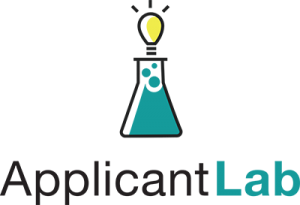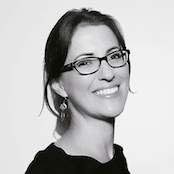In the latest episode of Business Casual, the hosts delve into the notable findings of a significant GMAC survey targeting business school aspirants.
This in-depth survey, capturing the perspectives of over 4,000 participants, reveals an increasing preference for the traditional two-year MBA programs over their one-year counterparts, indicating a shift towards more comprehensive educational experiences. The episode further explores the growing demand for hybrid learning formats, highlighting the flexibility they offer to learners. Despite the observed fluctuations in the consulting sector’s recruitment, it continues to be the preferred career path for many MBA candidates. An interesting observation from the survey is the rise in students opting for local educational opportunities, prompted by financial considerations and the appeal of burgeoning domestic markets, notably among Indian aspirants.
The podcast unpacks these evolving preferences, emphasizing the heightened interest in courses focusing on diversity, sustainability, and artificial intelligence, shaping the future landscape of business education.
Episode Transcript
[00:00:04.370] – John
Well, hello, everyone. This is John Byrne with Poets and Quants. Welcome to business Casual, our weekly podcast with my co-host, Maria Wich-Vila and Caroline Diarte Edwards. I’ll remind you once again, Maria is the founder of Application Lab. You can check it out. And Caroline, of course, the former head of admissions at INSEAD and a co-founder of Fortuna Admissions. A big report came out in the past week. This is really the single biggest survey of graduate business candidates that is done in the year. It’s done by the folks who give you the GMAT, the Graduate Management Admission Council. In this case, they have surveyed more than 4,000 candidates. There’s some interesting takeaways from the latest study. We did a piece on four big takeaways, and then we also did a piece, so this is two stories, on the primary takeaway from this year’s report. That story basically said that more candidates really are interested in diversity and inclusion and sustainability, and they crave more classroom content on artificial intelligence. We’ve talked endlessly about these topics on our podcast, so no surprise there. We know there has been a stampede of attention in the business school community to diversity and inclusion, sustainability, and artificial intelligence.
[00:01:40.980] – John
In fact, just this week, the Wall Street Journal on their front page had a piece on business schools going gaga over AI. But our four takeaways from the GMAC report, I’m just going to go over them. We’re going to discuss them in some detail and get into the weeds on some of this. The two-year MBA is once again seen as the preferred program type, regaining a top spot from the one-year accelerated MBA, while the master’s in management is gained in popularity. Some of these differences are quite slight. In the case of the two-year MBA, we’re talking about two percentage points. You could even argue that it’s within the margin of error for this sample size and survey. Nonetheless, it was a big surprise last year when the one-year MBA seemed to eclipse the two-year traditional MBA program as the program of choice. The second big takeaway, candidates want more flexibility in how they learn with hybrid programs gaining in popularity. This is not a surprise. Most of the MBA students in the world are actually enrolled in part-time programs. That part-time grind, going to class two times a week after a long workday, is just something that people aren’t willing to put up with more.
[00:02:59.690] – John
While people do like in-person learning in these part-time programs, they like the flexibility of having the option of also taking these classes online, particularly in the electives. That came through loud and clear in the latest survey data. Another piece of takeaway, consulting is once again the most desired career destination of prospective B-School students. We know that consulting It vacuums up a massive percentage of MBA graduates from full-time programs. That’s no surprise. What is a surprise is, in fact, in the last couple of years, people who have been hired by consulting firms have found their start dates delayed significantly because there just wasn’t enough work for them. It hasn’t dulled consulting industry’s appetite for hiring MBAs, but it I think that the hiring is down a little bit and delayed for those who do land the job. The fourth takeaway we’re mentioning is mobility shifts as affordability concerns spike. The increasing cost of graduate management programs is leading more people to basically stay in their home countries and get a degree there as opposed to traveling to the US, Europe, Canada, or elsewhere. One example in our story is in India, a majority of candidates for the first time last year said they plan to apply domestically.
[00:04:39.510] – John
That’s up from 41% in 2022 to 53%. Maria, what do you think of all this?
[00:04:46.650] – Maria
Well, I mean, there’s certainly no shortage of interesting data to dig through. But as you were speaking and as we were chatting before we started recording, I wonder if one of the primary drivers in a lot of these shifts is this perception of overall weakness in the global economy. For example, a two-year program versus a one-year program, all else being equal, the biggest difference, in addition to the cost, is that you get that internship, which might help you either make a career pivot or land a slightly better job after you graduate. Perhaps if I’m a little less certain about my career prospects, I might find more stability or more potential benefits to taking the two-year program. Similarly, I wonder if these perceptions about the economy might be driving why people from other countries may want to stay closer to home and why the affordability of the degree may be something that’s coming more and more into play, this perceived ROI or value for money. I feel like perhaps maybe that might be a key driver that then filters out throughout a number of these different factors.
[00:05:50.850] – John
Yeah, true. Carolina, I know you’re always interested, especially in the European programs, given your INSEAD background. What’s your take on some of this data?
[00:06:04.410] – Caroline
Yeah, I do think it’s interesting to see the prevalence of the domestic programs. And I think that makes a lot of sense in a country like India, where 20 years ago, MBA candidates or 10 years ago might have thought that to have a successful career, they really needed to get out of India, go and study somewhere else, and be able to work in another country. Now, thank goodness, the Indian economy has grown so much. There are tremendous opportunities domestically, and so they feel less of a need to go to the US or Europe for their education in order to also then springboard into an opportunity outside of their home country because they’re a fantastic opportunities, and maybe even better opportunities for them domestically. So I think that that’s playing into this. I think that also just geopolitical conflicts are over the past few years have perhaps reduced people’s inclination to be globally mobile, which is a shame, right? I think that the appeal of a very international MBA program today is perhaps not the same as it was 10 years ago. I think that candidates are less excited about the idea of being an immersed in a very international environment and being able to work in different countries and have a really globally mobile career than they were in the past.
[00:07:33.930] – Caroline
And I think that’s really to our detriment, unfortunately. And that also plays out in the data that we see in this report with Chinese candidates being less likely to come to the US. That reflects the strain in relationships, the very difficult relationship between China and US. So that drop to a certain extent in global mobility, I think, is playing out in this data. And I think that that’s really a shame because the more that we get people to study together from across the world, the more you realize we have in common, the better we’re able to work together across borders. I think that is a positive for all of our society. I understand while people are perhaps staying local or attending local programs because of those opportunities and difficulties of perhaps moving across borders these days, I think that that’s also a shame. And for example, INSEAD, if you look at the 2024 class, they have reduced the class size, right? So the class of 2024 is a smaller class than the previous few years. And I think that that reflects the fact that fewer people are looking to, for example, there are fewer people from Europe or the US who want to go and study in Singapore because they want to get a great job in Shanghai or in Hong Kong in the same way that people did when I was studying at INSEAD 20 years ago.
[00:09:05.930] – Caroline
Those opportunities just aren’t there to the same extent as they used to be. In the past, it was much easier to get a job in Singapore as an international student. You could study at INSEAD and stay and get a fantastic job in Singapore. It’s much, much harder to do that. It’s much harder to get the visa these days. And so I think that there is less international mobility to a certain extent.
[00:09:31.640] – John
That’s true. And the other issue here, too, for a lot of students who come from areas where the pay is not nearly what it is in US and Europe, to go to a US or European school, you really need, when you graduate, to work there to make sense of it. If you go back to India or you go back to China, after paying the high tuition rates, it’s really difficult to pay back those loans without a US or European salary. That’s always been tricky. I will say there’s also some contradictions in a way, because the survey found a very strong preference for diversity and inclusion. Yet in the case of India, you have a majority of candidates now who would prefer to study domestically, and there’s absolutely no diversity in those classrooms other than work diversity. Even that’s very limited because as we know, So many people in India do engineering degrees, undergrad, and end up in MBA or graduate management programs. So even there, you have very little diversity. And the beauty of a European or US program for someone from India is you get true diversity. The other issue, frankly, is that even though there may be a preference to study in India among people who are there, the truth is that the world is flooded with very good Indian candidates.
[00:11:02.350] – John
In most schools, if you looked at their acceptance rates for the number of Indian candidates in their pools, it’s significantly lower than either their average acceptance rate or the acceptance rate for many other students because in crafting a class, you don’t want to have 50% Indian, although based on stats and accomplishments, that would be very easy to have. But you would really undermine your ability to craft a diverse and really interesting class that bring a lot of various experiences into discussions. Now, Maria, being the detective that she is, took a microscope to some of these findings. What did you find in the weeds that was interesting to you, Maria, in this report?
[00:11:56.620] – Maria
One of the things that really did jump out at me was the preference for a candidate from Africa to study in Canada. That was really surprising to me. Canada makes a ton of sense as a destination for a lot of people for a lot of reasons. The degrees tend to be one year in length. Canadian immigration policy is famously friendly, at least that’s the stereotype. I can see Canada being very popular. And yet Canada was less than 10% for Canada’s from China, around 9%, 6% from India, and 26% of candidates from Africa were interested in studying in Canada. That’s quite a pretty significant difference. That was something that really jumped out at me as surprising.
[00:12:42.270] – John
Yeah, in the Canadian programs, they’re much less expensive than the US programs. I think they’re more in the order of some of the European programs in terms of pricing. Canadian country is very welcoming to immigration. It’s known as one of the big pro-immigration countries, so it’s relatively easy to get a visa and a job in Canada. What’s interesting about Africa is that for years, the former dean of Oxford, Saeed, made it a strategic point to go and recruit candidates from Africa for his MBA program at Oxford. His thinking on this was simple. Over the next century, Africa is going to merge as one of the true major big economies on the order of a China and a US and Europe. And he wants to be ahead of the curve. And I think a lot of schools have really made that an effort as well. So it’s really interesting that more African candidates are interested in going to Canada. It makes me wonder if the Canadian schools are adopting similar strategies to what Peter did at Oxford. Caroline, any last thoughts?
[00:13:58.680] – Caroline
I think the The data there on the importance of equity inclusion, the importance of sustainability is very interesting. They’ve got some nice tables on by region and also showing to what extent those factors are a deal breaker for candidates in looking at programs. And so DEI rates very highly as a deal breaker for most of the regions, actually. So that’s actually good to see. It’s 50 % above, and often two-thirds of candidates are saying that that’s a deal breaker. And the importance of sustainability, and about a third of candidates globally saying that that is critical and it’s a deal breaker for them when they’re looking at schools. So that’s good for a school like INSEAD or RAS. We were talking to the other day where they have really taken that very seriously and integrated that into the curriculum. One thing that did make me scratch my head a bit was in your article, you flagged that two-fifths of candidates are saying that AI is essential to a business school curriculum. What are the other three-fifths thinking?
[00:15:11.230] – John
Out of the sand. That’s true, right? Yeah, it is amazing. I had a conversation with probably the most popular executive coach in the world, Marshall Goldsmith, the other day, and he has a couple of Indian who have invested millions of dollars in creating a bot that really what it does, it takes account of all the books that he’s written, all the articles that he’s written, and you can ask the bot any question and up will pop the answer from Marshall Goldsmith. But it’s really not Marshall Goldsmith, it’s his bot. But it’s basically using all of the stuff that he’s written during the course of his life to basically give these answers, and it’s pretty amazing. I can only imagine the application of this software for other teaching and learning exercises by well-known professors. I can see a Michael Porter bot in the future on strategy and value creation and globalization. It’s really quite amazing. Ai is we have only seen so little Over the next five years, it’s really truly going to explode in ways that are going to blow our minds, I think.
[00:16:37.300] – Maria
I just wanted to tack on to that, though. One interesting thing in this report was that if you look at the career preferences, they break it out by millennials versus Gen Z. Everyone has roughly the same interest in going into consulting, but there’s about a 10% of difference. More millennials want to go into technology than Gen Z, more Gen Z want to go into finance versus technology. That’s interesting. I would have thought that in general, first of all, Gen Z as the younger generation who were raised by phones, that their interest in technology would be just as high, if not higher. Then also, given what you guys were just saying about AI, if anything, I would think that they would be more attuned to the fact that technology is probably going to be a pretty dynamic. I mean, every industry is going to be dynamic and every industry is going to face upheaval. But I was just surprised. That was another little bar chart that jumped out at me as surprising that there was far fewer, not far fewer, but you have 45% interest among millennials versus around 35% interest in Gen Z for technology.
[00:17:39.420] – Maria
We’ll have to see what happens in the next coming years.
[00:17:42.540] – John
Yeah, these reports from GMAC are fascinating because they really slice the data in so many different ways for different groups of people, generations, programs, geographies. It’s fascinating material. If you want to have a look at this, take a look at four takeaways from GMAC 2024 Perspective Student’s Report at Poets and Quants. We also did the story, the other story that I mentioned earlier, GMAC survey, B-School Candidates, Wine, Equity, and Inclusion programs overwhelmingly. If you go into those stories, there’s a link to the full report, and you’ll find lots of really intriguing detail on graduate management education. Hey, thanks for listening. This is John Byrne with Poets and Quants.



